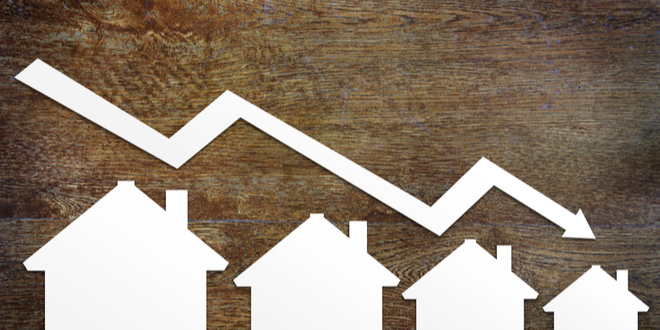Several factors, starting with high prices and not enough houses being built, have caused the median price of home to fall out of reach for more residents, according to a UC Riverside study.
The Inland Empire, for years one of Southern California’s most affordable housing markets, may no longer be so affordable.
Only 31 percent of households in Riverside and San Bernardino counties could afford to buy a median-priced home – $544,000 – during the first quarter of 2022, down from 39 percent in the first quarter of 2021, according to a recent study compiled by the UC Riverside School of Business Center for Economic Forecasting and Development.
The Inland Empire is still well ahead of California in housing affordability. Only 24 percent of the state’s households could afford a median-priced home in the second quarter.
But the eight percent affordability drop in the Inland region casts a shadow over the local housing market, which was one of the Inland economy’s few bright spots during the pandemic.
During the worst of COVID-19, home prices grew faster in the two-county region than in more affluent California markets, but that affordability has eroded as a result of higher mortgage rates and an endless demand for housing statewide, the report found.
“This is what affordability looks like in California,” said Taner Osman, research manager at the center for economic forecasting and a co-author of the report, in a statement that accompanied the report’s release. “Housing prices are at the crux of the state’s high cost of living and are out of reach to the majority of the population, as supply severely lags demand.”
To put those numbers in perspective, 45 percent of U.S. households could afford a median-priced home in May, according to the report.
“The contrast with the nation overall is stark,” Osman said in the statement.
One reason for the drop in affordability is that Inland home prices keep rising.
From first quarter 2021 to the first quarter of this year, home prices in the Inland Empire rose 19.4 percent, the report states. That was stronger growth than Los Angeles County (12 percent) and San Diego County (19.1 percent), but slower than Orange County’s 25 percent growth rate during that time.
Residential construction in the Inland Empire grew 40 percent year-over-year in the first quarter of this year, with 1,008 multi-family building permits and 3,832 single-family building permits issued during that time.
That was an increase of of 171 percent and 24 percent, respectively, compared with the first quarter of 2021.
As of April, there were 1.7 months of housing supply available for purchase in Riverside County and 2.2 months in San Bernardino County, according to the report.
That means that if houses, new or used, were to stop being put up for sale, what houses remained on the market would be bought in about a month and a half to a little more than two months.
A balanced housing market typically has six to seven months of supply, the report states
Despite the limited inventory, demand for housing remain strong, a trend that was accelerated by the federal pandemic stimulus and shows no sign of slowing.
“In a lot of ways, we’ve become desensitized high housing prices,” Osman said.
The affordability gap will probably get worse before it starts to turn around, says one economist who has been tracking the Inland economy for years.
“I believe the Inland Empire housing market will be fine in the long run, but for now the region keeps adding population and not enough houses are being built,” said Robert Kleinhenz, an independent economic consultant in Long Beach. “It’s simple arithmetic.”
The Inland Empire Regional Intelligence Report is the latest in a series of studies done by the forecasting center to determine how the Inland Empire has recovered from COVID-19. Besides the housing market – which the report labels a “bright spot” despite the eight point drop in affordability – the report looks at the local labor and commercial real markets, and its findings are generally positive.
Despite fears of a recession, the region’s short-term economic outlook is strong. Its 3.7 percent unemployment rate is four percentage points lower than it was before the pandemic, and more than 280,000 jobs have been added within the region since April 2020.
That more than covers the 228,000 jobs that were lost due to business closures caused by the pandemic, the report states.
Taxable sales receipts have gone up 23.8 percent during the past year, a surge caused mostly high by fuel prices and more spending in the business and industrial category, where receipts went up 57 percent.
Inland wage growth has also been solid: up 3.1 percent in Riverside County between the third quarter of 2020, and up 1.7 percent in San Bernardino County. However, real wages fell during that time because of inflation.
The Inland industrial market remained strong during the worst of the pandemic.
As of the first quarter of this year, the industrial vacancy rate fell to 3.2 percent despite 34.6 million square feet of space coming online during the quarter. Warehouse space for e-commerce goods has become more scarce, and asking rents in the Inland Empire grew 6.3 percent, according to the report.
 IE Business Daily Business news for the Inland Empire.
IE Business Daily Business news for the Inland Empire.


